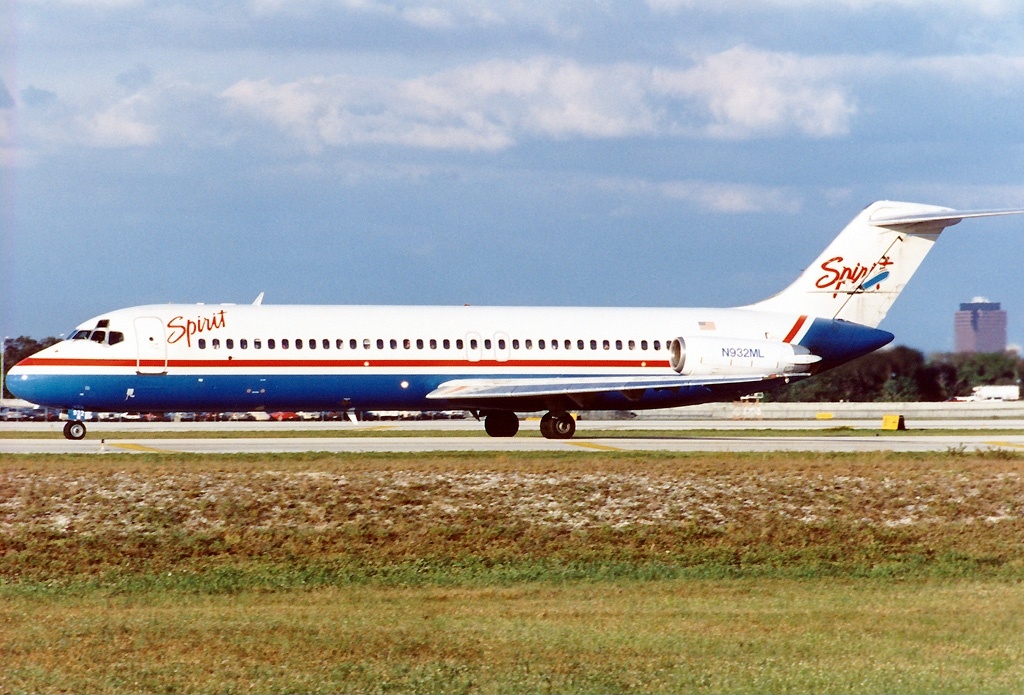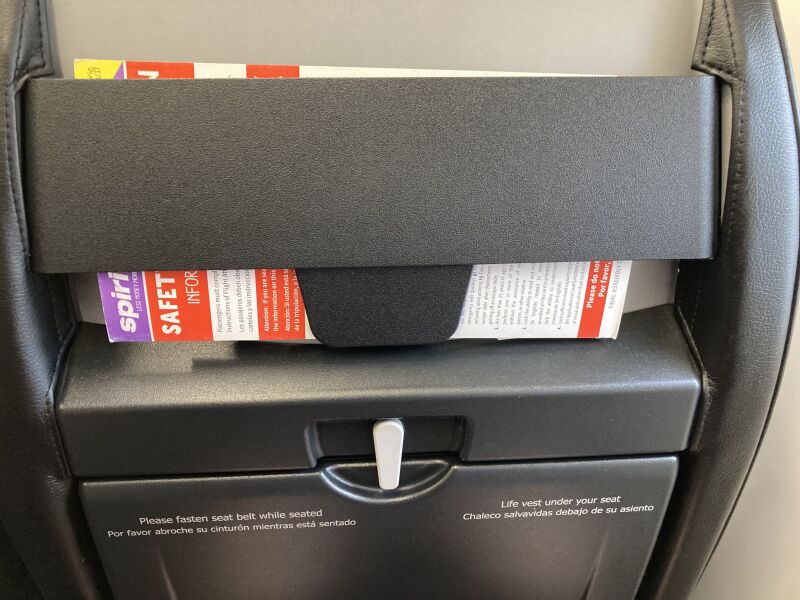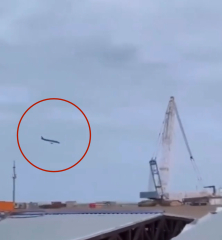Spirit Airlines: one of the largest budget airlines in North America. Many know the airline for its ultra-low-cost fares and occasionally edgy service. But the airline has not always been that way.

The History of Spirit Airlines
In its infancy, Spirit Airlines did not operate its own flights. The company was founded in 1983 as Charter One Airlines, and acted as a tour operator, offering vacation deals and packages to destinations such as Las Vegas, Atlantic City, and the Bahamas.
By May 1992, the then 10-year-old company made the decision to acquire six McDonnell Douglas DC-9-31, and 7 DC-9-32 aircraft, 13 aircraft in total. On June 1st of that year, the airline launched its first route operated by its own aircraft between Detroit (DTW) and Atlantic City (ACY).

On June 15th, service between Boston (BOS) and Providence (PVD) was also launched using the newly acquired DC-9 aircraft.
Spirit Airlines Growth
From 1993 onwards marks a period of major growth for the carrier, in which the airline saw an increase in passenger numbers, multiple new routes, and multiple controversies — most notably during the summer of 1994, in which the carrier overbooked flights, canceling 1,500 tickets.
In the late '90s, a new norm was being established among the world's low-cost airlines where they would exclusively operate a single aircraft type. This meant fewer parts, maintenance variation, and crew training required, allowing them to cut down on costs.

This is exactly what Spirit did. Between 1995 and 2000, the backbone of Spirit's fleet consisted of the McDonnell Douglas DC-9-21, MD-81, MD-82, MD-83, and MD-87.
By 2001, Spirit Airlines had a total of 55 McDonnell Douglas aircraft in its fleet, making it one of the largest operators of the DC-9 and MD-80 in North America.
Throughout the 2000s, Spirit continued its rapid pace of growth, establishing hubs in Atlantic City (ACY), Atlanta (ATL), Dallas (DFW), Chicago (ORD), Fort Lauderdale (FLL), and more.
A Shift in Service
In January 2005, Spirit Airlines was under an extreme amount of stress — the carrier was losing upwards of $70 million per year. During this time, the airline came under the helm of a new CEO, Ben Baldanza, who began to transition the carrier from one a full-service to an ultra-low-cost-carrier (ULCC) business model. Under this transition, the carrier began to introduce fees for onboard products such as carry-ons, food and drink services, and more.

As part of the new leadership, the airline also began to replace its rapidly aging fleet of DC-9 and MD-80 aircraft, In 2006, Spirit announced that it had exercised options for 30 Airbus A320-200 aircraft, set to be delivered in March of 2010. By January of 2009, the airline had extended this option to an order of 64 A320-200s.
From the delivery of its first Airbus A320 in March of 2010, Spirit Airlines has gone on to become an Airbus-exclusive airline. The carrier's final McDonnell Douglas aircraft — an MD-83 — was retired shortly after the introduction of these new Airbus planes.
Spirit Airlines' Current Fleet
As of May 2023, Spirit Airlines has a total of 197 Airbus A320 family aircraft:
| Aircraft | Number in Fleet | Configuration | Notes |
| Airbus A319-100 | 26 | 10C*, 135Y** | TBR*** 2025 |
| Airbus A320-200 | 64 | 8C, 174Y | - |
| Airbus A320neo | 77; 59 on order | 8C, 174Y | Include 50 options |
| Airbus A321-200 | 30 | 8C, 220Y | - |
*C - Big Front Seat; Spirit Airlines' version of business class
**Y - Normal Economy Seat
***TBR - To Be Retired
As well as these Airbus aircraft currently in the fleet, Spirit is also set to be the first A319neo operator in North America, with 31 of the type on order. The Airbus A321neo is set to make its debut in Spirit's fleet on June 7 of this year. The layout of the carrier's A319neos is still unknown, but the A321neo will have eight big front seats and 227 economy seats onboard.

What do Spirit Airlines' Seats Look Like?
Much like other budget carriers across the world, Spirit Airlines aircraft feature quite basic interiors with no extra features — even in the airlines' "Big Front Seat" product — such as power outlets or USB ports.

The only difference between the Spirit's "Big Front Seat" product and its normal economy product is that it features a larger, more cushiony seat, and larger armrests. These upper-class seats are also equipped with larger amounts of in-seat storage in the form of seat pockets. The airline has also recently begun installing mood lighting on the interiors of their new aircraft to make them feel more welcoming.
PHOTOS: Azerbaijan Airlines E190 Crashes in Kazakhstan » South African Airways Eyes India–South Africa Route » Ethiopian Airlines Expands Fleet with Second Airbus A350-1000 »
Comments (8)
 Doreen
Hello there! Do you know if they make any
plugins to assist with Search Engine Optimization? I'm
trying to get my blog to rank for some targeted keywords
but I'm not seeing very good success. If you know of any please
share. Thanks! You can read similar text here: Link Building
Doreen
Hello there! Do you know if they make any
plugins to assist with Search Engine Optimization? I'm
trying to get my blog to rank for some targeted keywords
but I'm not seeing very good success. If you know of any please
share. Thanks! You can read similar text here: Link Building
 Jacques
Howdy! Do you know if they make any plugins to help with Search Engine Optimization?
I'm trying to get my site to rank for some targeted keywords but
I'm not seeing very good success. If you know of any please share.
Many thanks! I saw similar article here: Backlinks List
Jacques
Howdy! Do you know if they make any plugins to help with Search Engine Optimization?
I'm trying to get my site to rank for some targeted keywords but
I'm not seeing very good success. If you know of any please share.
Many thanks! I saw similar article here: Backlinks List
 Eden
Hey! Do you know if they make any plugins to help with SEO?
I'm trying to get my blog to rank for some targeted keywords but I'm
not seeing very good results. If you know of any please
share. Kudos! You can read similar article here:
Ecommerce
Eden
Hey! Do you know if they make any plugins to help with SEO?
I'm trying to get my blog to rank for some targeted keywords but I'm
not seeing very good results. If you know of any please
share. Kudos! You can read similar article here:
Ecommerce
 Darla
Hey there! Do you know if they make any plugins to assist with SEO?
I'm trying to get my blog to rank for some targeted keywords but I'm not
seeing very good success. If you know of any please share.
Cheers! You can read similar article here: Dobry sklep
Darla
Hey there! Do you know if they make any plugins to assist with SEO?
I'm trying to get my blog to rank for some targeted keywords but I'm not
seeing very good success. If you know of any please share.
Cheers! You can read similar article here: Dobry sklep
 Kellie
Hey! Do you know if they make any plugins to help with SEO?
I'm trying to get my blog to rank for some targeted keywords but I'm not seeing
very good success. If you know of any please share. Appreciate it!
You can read similar article here: Sklep internetowy
Kellie
Hey! Do you know if they make any plugins to help with SEO?
I'm trying to get my blog to rank for some targeted keywords but I'm not seeing
very good success. If you know of any please share. Appreciate it!
You can read similar article here: Sklep internetowy
 Ben Selle
I personally don’t fly Spirit but found this article very interesting and well thought out.
Ben Selle
I personally don’t fly Spirit but found this article very interesting and well thought out.
 Kristal
Hi exceptional blog! Does running a blog like this require a large amount
of work? I have virtually no understanding of computer programming but I had been hoping to start my own blog soon. Anyway, if you have
any recommendations or techniques for new blog owners
please share. I know this is off topic but I just wanted to ask.
Many thanks! I saw similar here: ecommerce and also here:
sklep internetowy
Kristal
Hi exceptional blog! Does running a blog like this require a large amount
of work? I have virtually no understanding of computer programming but I had been hoping to start my own blog soon. Anyway, if you have
any recommendations or techniques for new blog owners
please share. I know this is off topic but I just wanted to ask.
Many thanks! I saw similar here: ecommerce and also here:
sklep internetowy
 Robzfe
In today's rapid world, staying informed about the latest advancements both domestically and globally is more crucial than ever. With a plethora of news outlets vying for attention, it's important to find a dependable source that provides not just news, but perspectives, and stories that matter to you. This is where <a href=https://www.usatoday.com/>USAtoday.com </a>, a leading online news agency in the USA, stands out. Our commitment to delivering the most current news about the USA and the world makes us a key resource for readers who seek to stay ahead of the curve.
Subscribe for Exclusive Content: By subscribing to <a href=https://www.usatoday.com/>USAtoday.com</a>, you gain access to exclusive content, newsletters, and updates that keep you ahead of the news cycle.
<a href=https://www.usatoday.com/>USAtoday.com </a> is not just a news website; it's a dynamic platform that strengthens its readers through timely, accurate, and comprehensive reporting. As we navigate through an ever-changing landscape, our mission remains unwavering: to keep you informed, engaged, and connected. Subscribe to us today and become part of a community that values quality journalism and informed citizenship.
Robzfe
In today's rapid world, staying informed about the latest advancements both domestically and globally is more crucial than ever. With a plethora of news outlets vying for attention, it's important to find a dependable source that provides not just news, but perspectives, and stories that matter to you. This is where <a href=https://www.usatoday.com/>USAtoday.com </a>, a leading online news agency in the USA, stands out. Our commitment to delivering the most current news about the USA and the world makes us a key resource for readers who seek to stay ahead of the curve.
Subscribe for Exclusive Content: By subscribing to <a href=https://www.usatoday.com/>USAtoday.com</a>, you gain access to exclusive content, newsletters, and updates that keep you ahead of the news cycle.
<a href=https://www.usatoday.com/>USAtoday.com </a> is not just a news website; it's a dynamic platform that strengthens its readers through timely, accurate, and comprehensive reporting. As we navigate through an ever-changing landscape, our mission remains unwavering: to keep you informed, engaged, and connected. Subscribe to us today and become part of a community that values quality journalism and informed citizenship.
Add Your Comment
SHARE
TAGS
INFORMATIONAL Spirit Spirit Airlines A320 A321 A321neo A319 MD-80 History Airline FleetRECENTLY PUBLISHED
 PHOTOS: Azerbaijan Airlines E190 Crashes in Kazakhstan
An Azerbaijan Airlines Embraer E190 crashed approximately 3 km from the city of Aktau today, December 25. Images from the scene show that the aircraft lost speed and then crashed, followed by a large explosion.
NEWS
READ MORE »
PHOTOS: Azerbaijan Airlines E190 Crashes in Kazakhstan
An Azerbaijan Airlines Embraer E190 crashed approximately 3 km from the city of Aktau today, December 25. Images from the scene show that the aircraft lost speed and then crashed, followed by a large explosion.
NEWS
READ MORE »
 South African Airways Eyes India–South Africa Route
As part of its recovery strategy, South African Airways (SAA) is exploring the reinstatement of direct flights between India and South Africa. SAA, along with Minister of Tourism Patricia de Lille, on December 3, 2024, participated in a high-level delegation to India to strengthen aviation and tourism ties between the two nations.
ROUTES
READ MORE »
South African Airways Eyes India–South Africa Route
As part of its recovery strategy, South African Airways (SAA) is exploring the reinstatement of direct flights between India and South Africa. SAA, along with Minister of Tourism Patricia de Lille, on December 3, 2024, participated in a high-level delegation to India to strengthen aviation and tourism ties between the two nations.
ROUTES
READ MORE »
 Ethiopian Airlines Expands Fleet with Second Airbus A350-1000
Ethiopian Airlines, Ethiopia's national carrier, has taken delivery of its second Airbus A350-1000, registered as ET-BAX. This advanced aircraft is powered by Trent XWB-97 engines, further solidifying the airline’s commitment to modernizing its fleet.
NEWS
READ MORE »
Ethiopian Airlines Expands Fleet with Second Airbus A350-1000
Ethiopian Airlines, Ethiopia's national carrier, has taken delivery of its second Airbus A350-1000, registered as ET-BAX. This advanced aircraft is powered by Trent XWB-97 engines, further solidifying the airline’s commitment to modernizing its fleet.
NEWS
READ MORE »





